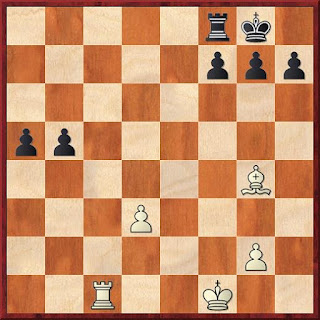Sunday, 26 June 2022
077. Errata
White: verdi - all-play-all tournament, ChessWorld.net, 2022
No matter how careful you are, errors always slip through. In my book:
Typographical / input errors
So far I've found two incorrect diagrams, an erroneous reference, and a misquote.
– P207 (Two Knights): in the first diagram, the h-pawn should be on h3.
– P251 (Ulvestad): in the first diagram, there should be a pawn on f3. (I must have tweaked the diagrams in the font and then failed to proof them properly.)
– P285 (Jaenisch): line “D2” should be “E2”.
– P307 (Jaenisch): the final word of the first Swiercz quote should be “piece” not “pawn”.
(I guess I had the word “pawn” stuck in my head.)
Transpositional errors
It seems I didn't quite get all the multitudinous transpositions down.
– P95 (Wagenbach): 5 Qe2 d6 6 Nc3 c6 7 d4 g5 is indeed “another main line”, but one Black needs to avoid. Instead, 6...Nc6 is correct, when 7 d4 g5 8 e5 is line E33.
– P129 (Wagenbach): 7...Bg7 does not run “the risk of landing in an inferior 7 e5 line (E33) after 8 e5”, because 8...Nc6! then transposes to my main line E33 again.
Analytical errors
These remain to be seen or shown. However, I have – of necessity – found a small refinement in one variation:
– P240 (Two Knights): At the end of note e) with 20 Bxe6,
I've now discarded 28...Rb8 in favour of 28...g6. There's no urgency to put the rook on b8, especially as the tempo could cost Black in the event of a timely Rc8 by White, swapping the rooks off. Having been forced (by an opponent) to look at this position in more depth, the way to defend is as follows:
Put the queenside pawns on a3 and b4 with the rook in support. The problem then for White, with just one light square between the a-pawn and promotion, is how to remove both pawns. It will require all three pieces: king and rook to capture a protected b-pawn, with the bishop on the a2-g8 diagonal to halt the a-pawn. In response Black can aim to create another passed pawn with ...h5-h4, ...g5-g4 and ...h4-h3 (to overload the bishop), while the king heads for the centre to eliminate the d-pawn. No white pawns on the board means a draw. Another, not insignificant, factor is that, if the white d-pawn is removed and rooks exchanged, even a single black h-pawn can scupper any win, since ...h4-h3 and g2xh3 will leave White with the wrong bishop for the remaining rook's pawn.
This all played out satisfactorily in the game below. Note that the king goes to f8, rather than g7 (on move 31), to avoid ideas of Rc7 and Be6. And later (move 38), that taking on f7 doesn't get White anywhere: 38 Bxf7 g5 39 Bc4 g4 or 38 Rxf7+ Ke5 39 Bc4 Ra8 are both fine for Black.
Labels:
C55,
Two Knights Defence
Subscribe to:
Post Comments (Atom)

No comments:
Post a Comment